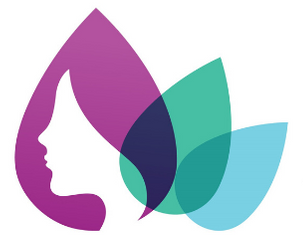|
By Jean Lee | November 21, 2021 "Shantell Jones gave birth in an ambulance parked on the side of a Connecticut highway. Even though she lived six blocks away from a hospital, the emergency vehicle had to drive to another one about 30 minutes away.
The closer medical center, Windham Hospital, discontinued labor and delivery services last year and is working to permanently cease childbirth services after “years of declining births and recruitment challenges,” its operator, Hartford HealthCare, has said. But medical and public health experts say the step could potentially put pregnant women at risk if they don't have immediate access to medical attention. Losing obstetrics services, they said, could be associated with increased preterm births, emergency room births and out-of-hospital births without resources nearby, like Jones' childbirth experience. The dilemma Jones faced is one that thousands of other pregnant women living in rural communities without obstetrics units nearby are encountering as hospitals cut back or close services to reduce costs. Nationwide, 53 rural counties lost obstetrics care from 2014 through 2018, according to a 2020 study in the Journal of the American Medical Association, which also found that out of 1,976 rural counties in the country, 1,045 never had hospitals with obstetrics services to begin with. The problem is particularly acute in communities of color, like Windham in northeastern Connecticut, where the population is 41 percent Latino, while the statewide Latino population is only 16.9 percent, according to the U.S Census Bureau. The community is 6.2 percent Black. Local activists say they fear low-income residents will bear the brunt of the hospital’s decision because Windham has a 24.6 percent poverty rate compared to 10 percent statewide, according to the census. The night Jones delivered her son, her mother, Michelle Jones, had called 911 because Jones was going into labor a few weeks early, and after her water broke they knew the baby was coming soon. Both expected the ambulance to drive the short distance to Windham Hospital, where Jones received her prenatal care. But the ambulance attendant was told Windham wasn't taking labor and delivery patients and was referring people to Backus Hospital in Norwich, Jones said. In the ambulance, she was without her mother, who was asked to follow in her car. “I was anxious and scared and traumatized,” Jones said." By Sarah Griffiths | April 24, 2019 "Giving birth can be one of the most painful experiences in a woman’s life, yet the long-term effects that trauma can have on millions of new mothers are still largely ignored.
It’s 03:00. My pillow is soaked with cold sweat, my body tense and shaking after waking from the same nightmare that haunts me every night. I know I’m safe in bed – that’s a fact. My life is no longer at risk, but I can’t stop replaying the terrifying scene that replayed in my head as I slept, so I remain alert, listening for any sound in the dark. This is one of the ways I experience post-traumatic stress disorder (PTSD). PTSD is an anxiety disorder caused by very stressful, frightening or distressing events, which are often relived through flashbacks and nightmares. The condition, formerly known as “shellshock”, first came to prominence when men returned from the trenches of World War One having witnessed unimaginable horrors. More than 100 years after the guns of that conflict fell silent, PTSD is still predominantly associated with war and as something largely experienced by men. But millions of women worldwide develop PTSD not only from fighting on a foreign battlefield – but also from struggling to give birth, as I did. And the symptoms tend to be similar for people no matter the trauma they experienced. “Women with trauma may feel fear, helplessness or horror about their experience and suffer recurrent, overwhelming memories, flashbacks, thoughts and nightmares about the birth, feel distressed, anxious or panicky when exposed to things which remind them of the event, and avoid anything that reminds them of the trauma, which can include talking about it," says Patrick O’Brien, a maternal mental health expert at University College Hospital and spokesman for the Royal College of Obstetricians and Gynaecologists in the UK. Despite these potentially debilitating effects, postnatal PTSD was only formally recognised in the 1990s when the American Psychiatry Association changed its description of what constitutes a traumatic event. The association originally considered PTSD to be “something outside the range of usual human experience”, but then changed the definition to include an event where a person “witnessed or confronted serious physical threat or injury to themselves or others and in which the person responded with feelings of fear, helplessness or horror”. This effectively implied that before this change, childbirth was deemed too common to be highly traumatic – despite the life-changing injuries, and sometimes deaths, women can suffer as they bring children into the world. According to the World Health Organization, 803 women die from complications related to pregnancy and childbirth every day. There are few official figures for how many women suffer from postnatal PTSD, and because of the continued lack of recognition of the condition in mothers, it is difficult to say how common the condition really is. Some studies that have attempted to quantify the problem estimate that 4% of births lead to the condition. One study from 2003 found that around a third of mothers who experience a “traumatic delivery”, defined as involving complications, the use of instruments to assist delivery or near death, go on to develop PTSD. With 130 million babies born around the world every year, that means that a staggering number of women may be trying to cope with the disorder with little or no recognition. And postnatal PTSD might not only be a problem for mothers. Some research has found evidence that fathers can suffer it too after witnessing their partner go through a traumatic birth. Regardless of the exact numbers, for those who go through these experiences, there can be a long-lasting impact on their lives. And the symptoms manifest themselves in many different ways. "I regularly get vivid images of the birth in my head,” says Leonnie Downes, a mother from Lancashire, UK, who developed PTSD after fearing she was going to die when she developed sepsis in labour. “I constantly feel under threat, like I'm in a heightened awareness.” Lucy Webber, another woman who developed PTSD after giving birth to her son in 2016, says she developed obsessive behaviours and become extremely anxious. “I’m not able to let my baby out of my sight or let anyone touch him,” she says. “I have intrusive thought of bad things happening to all my loved ones.” Not all women who have difficult births will develop postnatal PTSD. According to Elizabeth Ford of Queen Mary University of London and Susan Ayers of the University of Sussex, it has a lot to do with a woman’s perception of what they went through. "Women who feel lack of control during birth or who have poor care and support are more at risk of developing PTSD,” the researchers write. The stories from women who have developed PTSD after giving birth seem to reflect this. Stephanie, whose name has been changed to protect her identity, says she was poorly cared for during labour and midwives displayed a lack of empathy and compassion. A particularly difficult labour saw her being physically held down by staff as her son was delivered. “He was born completely blue and taken away to be resuscitated and I was given no information on his condition for hours.” |
Archives
August 2023
Categories
All
|
|
SANDRA RODRIGUEZ-SIUTS, PH.D., LLC
9590 E Ironwood Square Drive, Suite 210 Scottsdale, AZ 85258 Phone: (480) 473-5411 Fax: (480) 436-6900 |
© Copyright 2023 Sandra Rodriguez-Siuts, Ph.D. - All Rights Reserved

 RSS Feed
RSS Feed




